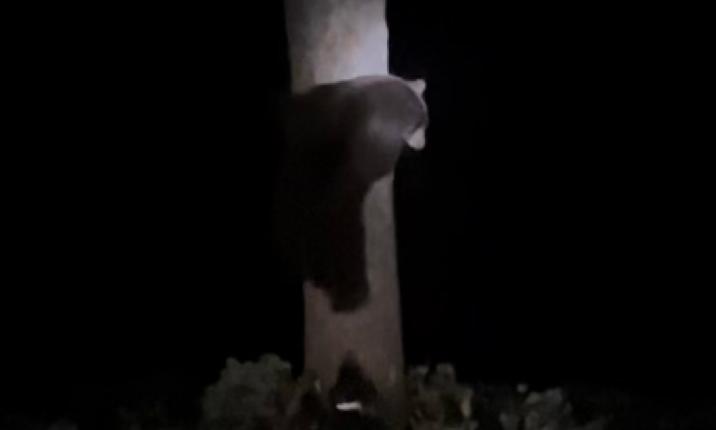Early Annals of Downieville and Vicinity — Part 5
March 10, 2023
Reprinted with permission by the Sierra County Historical Society from The Sierran of April 1971, Vol 3., No.1 We continue with another chapter of the reminiscences of a gold rush miner, which appeared in the Tuolumne Courier on June 16, 1860. The unknown author of the “Early Annals” prospected in and about Downieville in ‘50 and ‘51, then on the Feather River ‘till ‘53, when he participated in the subsequent “hill diggin’s” boom around ‘54. We have reason to believe that a few of his facts may be just a little distorted, but the spirit of the times and the earliest events on Kanaka Creek are well chronicled for us by the Annalist. He does not refer to Alleghany as such, because the town did not receive its name until 1857, after the events described below, and after the Annalist had moved on to Tuolumne County. However, any of our readers who are familiar with this area will have no difficulty in following his narrative. Wm. Pickiepoche Kanaka Creek and the Kanakas The year 1850 was preeminently the year of the prospectors: amongst whom was a large company of Kanakas and South Sea Islanders, under various chieftains. The most conspicuous were Capt. Rose, (commonly reported to be one of old Kamhehameha’s sons;
at any rate he was an educated native, and had been long amongst the whites, speaking our language fluently and well versed in our customs) and a native chief known as “Jim Crow the First,” to distinguish him from another of the same name.
Jim Crow could also speak English, having been long in our whaling service, and had married one of Capt. John A. Sutter’s Indians. These two rival chieftains lived in a kind of rude royalty, exacting a daily tribute from their inferiors, ordering
them to prospect, cook, etc., as they pleased; as well as administering their own laws and justice according to their caprice. Early in 1850 “Jm Crow,” as I mentioned in a former number, discovered the famous Canon, which has ever since gone
by his name, and thus became a prospector of some importance among the now very heterogeneous community. In May Capt. Ross became jealous of the popularity which “Jim Crow” had secured, determined to try and retrieve some of his lost popularity. Accordingly dividing his portion ito small squads, he started them out in all directions, with orders
to rendezvous again at Kanaka Bar on the south branch of the North Fork of the Yuba. This plan was not original with Capt. Ross, but was the suggestion of Major Wm. Downie; who, along with Howland B . Cossett Esq., subsequently - in 1853 or 54 - Prosecuting
Attorney in Downieville, kept the principal store on the Bar. According to the agreement, Downie was to have a share if the project succeeded. It did succeed, as will be seen hereafter, and if the parties had used common prudence, all of them might have
gone home with large piles. But Kanakas and sailors are proverbially improvident, and although they took out large sums daily, they were not the better for the strike; as every evening until late in the night, the monte ramblers were seen to be swindling
them out of their wealth. As I said before, it was in May that the discovery of the Creek was made by one of Capt. Ross’ prospectors. It was of such astonishing richness, that it was currently reported the miners only had to locate their claims to be rich at once, without
any, or at least but trifling labor. Downie, on receipt of the news, started off to secure his share. Rumors soon came that he was killed by the Indians, and H.B. Cossett raised a part to go and revenge his death; when, lo! as they were about departing,
the Major was discovered coming down the mountain on the opposite side of the river. On his arrival in camp, his description of the richness of the Creek was so enthusiastic, and the gold he displayed so alluring, that quite a stampede was made of most
of the miners, gamblers, and storekeepers, to this new Creek, which was named in honor of the discoverers, “Kanaka Creek”; a name which it has always retained. The exact location of the Kanaka Claim was on what is now known as “Little
Kanaka Bar”, situated immediately where French Ravine enters the Creek; and the first spot worked by them wa a crevice at the foot of the claim, running diagonally across the creek. This was immensely rich; so much so, that if it were not so well
known and attested to, the bare mention of the amount taken out by the Kanaka would not now be believed. As it was, Jem Cook, the gambler, and the constable of Downieville district, made not less than $15,000 to $20,000 in a short time, and went home;
coming back soon afterwards. This system he pursued five or six different trips up in 1855; never going home with less than $5,000, and several times with a great deal more. Charles Cunningham also went home with about $10,000, which he made in three
months, partly by mining, partly by store-keeping, and partly by gambling. If you want to know more about Cunningham's adventure in Sierra County and the richness of the Kanaka Creek diggings you'll enjoy this space in next week's edition of this paper.
Featured Articles

Two Plead Guilty to Poaching and Animal Cruelty Charges →
December 30, 2025
Two men face penalties for illegal hunting activities in Sierra County.
Fish and Wildlife Plans to Collar More Deer, Elk, and Wolves →
December 30, 2025
DWR Conducts First Snow Survey of the 2025-2026 Season →
December 31, 2025
Storms Bring Heavy Rainfall and Local Disruptions →
December 22, 2025
Sierra Hardware Plans Extensive Repairs After Flood Damage →
December 8, 2025